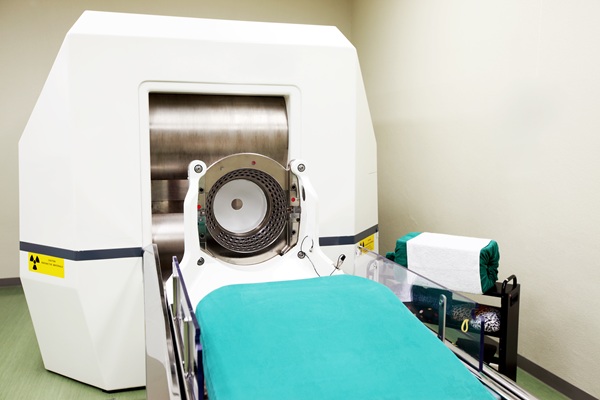Frequently Asked Questions About Gamma Knife Surgery

Gamma Knife is a non-invasive surgical procedure that uses targeted radiation to treat brain tumors, arteriovenous malformations, and other neurological conditions. Unlike traditional surgery, the Gamma Knife does not require incisions, making it an ideal option for patients seeking effective treatment with minimal recovery time. Here are answers to some of the most frequently asked questions about this procedure to help you better prepare for an appointment.
What is Gamma Knife surgery?
Gamma Knife surgery is a form of stereotactic radiosurgery that uses highly focused beams of radiation to treat brain conditions. The procedure is known as Gamma Knife surgery because it utilizes 192 precisely directed beams of gamma radiation to target a specific area. This technique enables surgeons to treat tumors and other brain conditions with pinpoint accuracy, eliminating the need for traditional open surgery.
The patient is typically positioned in a specifically designed frame, which keeps the head steady during treatment. A CT or MRI scan will create a detailed map of the brain, and the radiation beams are then delivered based on this image. Patients remain awake throughout the procedure, which can take one to three hours, depending on the size and location of the targeted area.
Who is a candidate for Gamma Knife surgery?
Gamma Knife surgery is suitable for patients with certain brain conditions that can be treated with focused radiation. According to the Cleveland Clinic, this includes individuals with brain tumors (both benign and malignant), arteriovenous malformations (AVMs), trigeminal neuralgia, and some functional disorders such as Parkinson's disease or epilepsy.
This type of treatment is particularly beneficial for patients whose tumors or conditions are located in areas of the brain that are difficult to access through traditional surgery. Patients who are not candidates for traditional surgery due to other health issues may also benefit from Gamma Knife treatment, as it is a non-invasive procedure with fewer risks.
Is Gamma Knife painful?
Despite its name, Gamma Knife surgery is generally not painful. As mentioned, the procedure is non-invasive, meaning no incisions are necessary, and the patient can remain awake the entire time. The only discomfort patients may experience is from the head frame, which the neurosurgeon places on the scalp to keep the head immobilized during the procedure. Local anesthesia may also be necessary to numb the scalp, minimizing any discomfort during the placement of the frame.
While the treatment itself does not cause pain, some patients may experience mild discomfort or a headache afterward. These side effects are usually temporary and can be managed with over-the-counter medications.
What is the recovery process like after Gamma Knife surgery?
The recovery process after Gamma Knife surgery is generally quick and straightforward. Most patients can return home the same day after the procedure. While some patients may experience mild side effects such as headaches or fatigue, these typically resolve within a few days.
Patients typically resume normal activities within 24 to 48 hours after the procedure. Follow-up appointments are necessary to monitor progress and ensure the treatment is effective. Over time, the targeted condition or tumor will shrink or be eliminated as the radiation continues to work, often showing results within weeks or months.
Consult a Phoenix neurosurgeon
Gamma Knife surgery offers a non-invasive, effective solution for treating various brain conditions with minimal recovery time and reduced risks compared to traditional surgery. If you or someone you know is considering this procedure, contact us. Our neurosurgeon will determine if it is the right treatment option for your condition.
Request an appointment here: https://arizonaneurosurgeon.com or call Randall Porter, M.D. at (602) 603-8951 for an appointment in our Phoenix office.
Check out what others are saying about our services on Yelp: Gamma Knife in Phoenix, AZ.
Recent Posts
Hemifacial spasm is a neurological condition that causes involuntary twitching or contractions on one side of the face. These spasms may begin near the eye and gradually affect surrounding muscles, including the cheek and mouth. While the condition is not typically life-threatening, it can significantly impact daily life and emotional well-being. Hemifacial spasm treatment focuses…
A herniated lumbar disc occurs when the soft center of a spinal disc pushes through a tear in the outer ring, often irritating nearby nerves. Early attention helps reduce pain and protect nerve function. Patients may experience sharp low back pain, radiating leg pain (sciatica), numbness, or weakness. A neurosurgeon evaluates symptoms, reviews imaging studies,…
Meningioma is a type of tumor that develops from the membranes covering the brain and spinal cord. While many meningiomas grow slowly and may not cause noticeable symptoms, some tumors can lead to significant health concerns. When you can recognize the signs early, you can get the treatment you need from a neurosurgeon, giving you…
Radiosurgery or stereotactic radiosurgery is a technique used to deliver high doses of radiation to targets within the brain. Radiosurgery, despite its name, is not a surgical procedure. Instead, the name comes from its precision. Radiosurgery can treat benign brain tumors, small brain metastases, arteriovenous malformations, and trigeminal neuralgia.Unlike surgical interventions, radiosurgery is non-invasive. Side…


